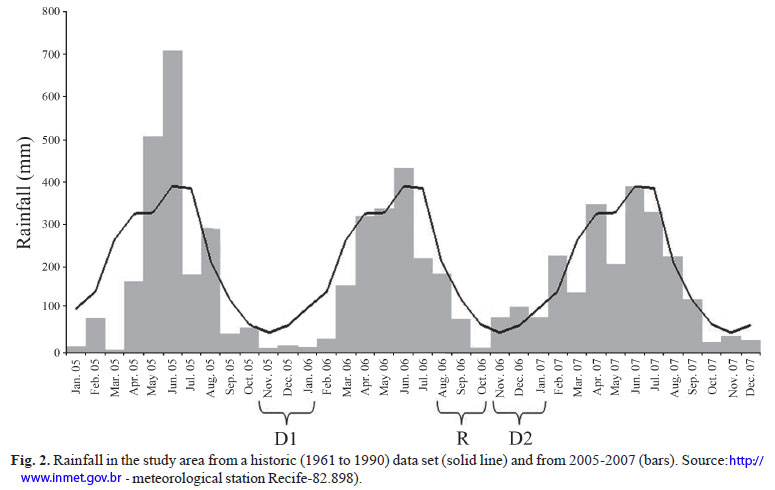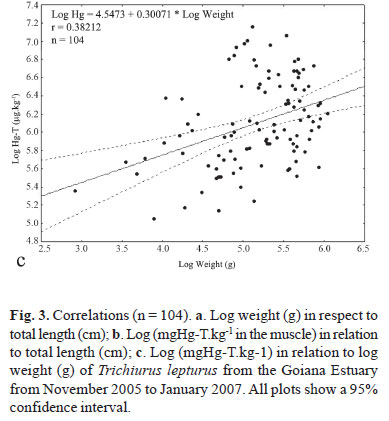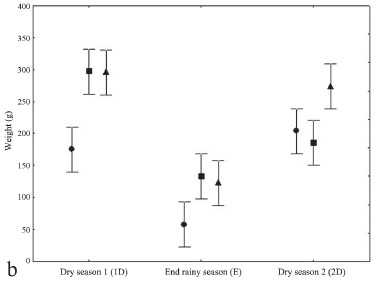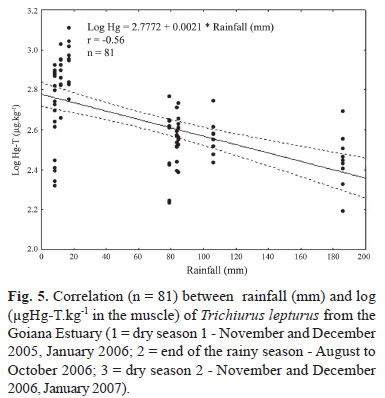The Goiana River Estuary (7º30'S 34º47'W) is a typical estuary of the semi-arid tropical regions. This estuary shelters a rich fauna of fish, crustaceans and mollusks which play an important role in the life of traditional populations. It is also the main recipient of the effluents from the sugarcane agro-industry and sewage from settlements and villages. Trichiurus lepturus (n = 104), from the Goiana Estuary were examined for total mercury contents during ten months (2005 to 2007) spaning two dry seasons and part of a rainy season. The studied individuals showed weight (W) (204.1±97.9 g) and total length (TL) (63.1±10.1 cm, range 29.5-89.0 cm) with a significant (p<0.05) correlation. Correlation between TL and Hg-T (r = 0.37286) and between W and Hg-T (r = 0.38212) were positive and significant (p<0.05). Two-way ANOVA (n = 81) showed that TL and W had significant difference (p<0.05) among seasons. The Hg-T showed differences in relation to the factor season (p<0.05). The correlation between Hg-T and rainfall showed a negative and significant relation (r = -0.56; p<0.05). Rainfall strongly influenced the bioacumulation of mercury in this species. Dryer months showed relatively higher mercury concentrations than the end of the rainy season. Less rainfall, and consequently less particulate matter and less primary production in the estuary, make mercury more bioavailable. Fish from this estuary are fit for human consumption at all times of the year.
Estuarine fish; Mercury bioavailability; Risk assessment; Seasonal changes; Trichiuridae












